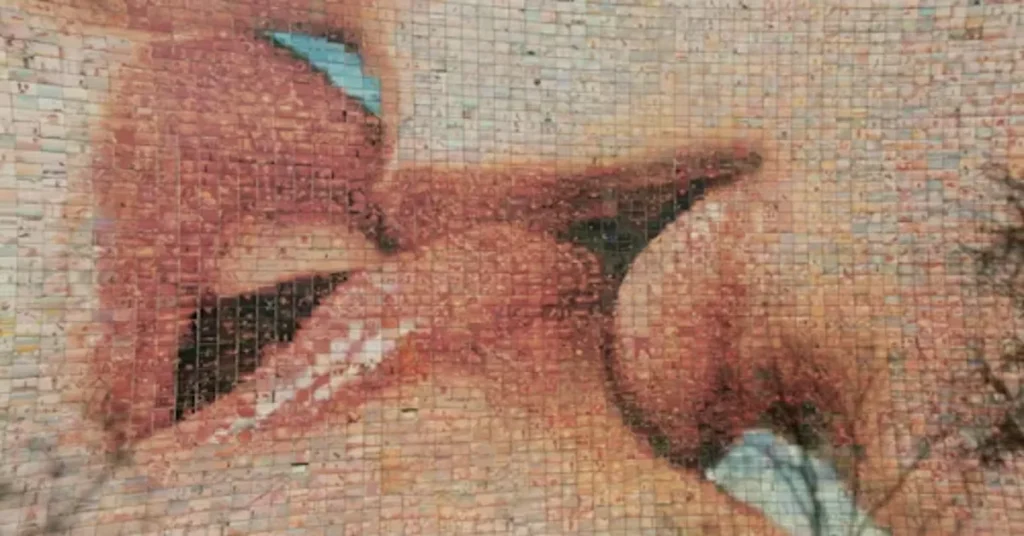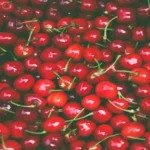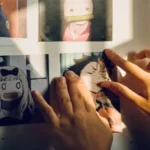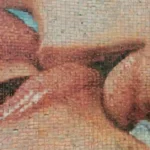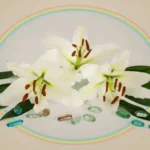Erotic art, broadly defined, refers to visual, literary, and performative works that explore human sexuality, intimacy, and desire through artistic expression. In the first 100 words, here is the answer to the searcher’s intent: erotic art is not merely explicit imagery—it is a centuries-old cultural practice reflecting social norms, taboos, power dynamics, and personal fantasies. From prehistoric fertility figurines to sophisticated digital media, it has been used to honor fertility, question morality, and celebrate the human form. Its boundaries shift with time, shaped by law, religion, and public taste. Today, erotic art encompasses paintings, sculpture, photography, performance, and multimedia, merging aesthetic intent with emotional and sexual resonance. In doing so, it navigates the line between intimacy and provocation, personal freedom and societal constraint.
“Erotic art speaks to the body, the mind, and the world around us—sometimes in harmony, sometimes in tension.” — Art Historian, 2021
Prehistoric and Ancient Origins
Erotic art’s lineage reaches deep into human prehistory. Archaeologists have unearthed Venus figurines, small carved statuettes emphasizing fertility features, dating as far back as 25,000 BCE. These artifacts suggest that early erotic imagery was tied to survival concerns—fertility, reproduction, and the cyclical nature of life. In ancient Mesopotamia, temple reliefs sometimes depicted sexual acts as part of sacred rites linked to agricultural abundance. Ancient Egypt’s papyri occasionally included explicit drawings, not necessarily for titillation, but to document practices or celebrate sensual pleasure.
Greek and Roman societies integrated erotic art openly into public and private life. Frescoes from Pompeii and Herculaneum depict lovers, mythological seductions, and humorous sexual scenes. These works coexisted with high philosophy and civic art, illustrating a society where sexual expression, while regulated, was recognized as an integral part of human experience.
Erotic Art in Asian Traditions
In Asia, erotic art has its own layered traditions. In Japan, the Edo period (1603–1868) produced shunga—woodblock prints blending humor, fantasy, and explicit detail. These works often portrayed not only heterosexual intimacy but also same-sex encounters, group scenes, and imaginative pairings of humans and mythical beings. Far from being hidden, shunga were exchanged among literate classes and valued for their artistry.
In India, the temples of Khajuraho (circa 950–1050 CE) feature intricate stone carvings where divine and mortal lovers engage in a variety of sexual acts. Scholars interpret these as symbolic of cosmic unity, blending spirituality and eroticism. Chinese scroll paintings, meanwhile, often framed erotic encounters within lush natural landscapes, emphasizing harmony and balance.
Table 1: Selected Historical Examples of Erotic Art
| Culture & Period | Medium | Purpose/Theme |
|---|---|---|
| Paleolithic Europe | Carved figurines | Fertility symbolism |
| Ancient Rome | Frescoes & mosaics | Celebration of sensual pleasure |
| Japan (Edo Period) | Woodblock prints (shunga) | Humor, intimacy, erotic fantasy |
| India (Chandela era) | Temple sculpture | Spiritual-erotic unity |
| China (Ming dynasty) | Scroll painting | Harmony of nature and human intimacy |
Medieval Taboos and Coded Imagery
With the rise of monotheistic religions in Europe and the Middle East, erotic art entered a more coded phase. Christian medieval Europe often framed sexuality as sinful, resulting in explicit imagery being hidden in marginalia of manuscripts or integrated into moralizing allegories. Gothic cathedral gargoyles occasionally included suggestive figures, a reminder that even sacred spaces could contain earthy humor.
In Islamic cultures, direct depiction of nudity was generally avoided, but poetic traditions flourished, using metaphor and allegory to convey eroticism. Persian miniature paintings might feature intimate scenes, often veiled in layers of symbolism to evade censure.
The repression of overt sexual imagery in public art did not extinguish it—it drove it into private collections, coded symbols, and literature, setting the stage for later re-emergence.
Renaissance Revival
The Renaissance brought renewed interest in the human form, inspired by classical antiquity. Artists such as Titian and Giorgione painted mythological scenes suffused with sensuality—Venus reclining, lovers entwined—under the protection of allegory. The nude became an acceptable artistic subject when framed as an idealized study, even if the compositions carried undeniable erotic charge.
Printmaking allowed for discreet circulation of more explicit works. Patrons, often from the elite classes, commissioned private pieces that blurred the line between art and pornography. Erotic art during this period mirrored the broader Renaissance tension between moral restraint and humanist celebration of the body.
The 18th and 19th Centuries: Libertinism and Morality
In 18th-century France, the libertine movement embraced erotic art as a declaration of personal freedom. Rococo painters like François Boucher filled canvases with playful seductions and lavish boudoir scenes. Engravings of the era catered to both aristocratic and bourgeois tastes, sometimes openly, sometimes under the cover of satire.
The 19th century brought a contradictory mix of prudery and indulgence. Victorian England censored public art while privately consuming erotic photography and literature. Orientalism introduced exoticized erotic scenes to European audiences, often reinforcing stereotypes but also widening visual vocabularies.
20th Century Modernism and Eroticism
The 20th century shattered many artistic taboos. Artists like Egon Schiele, Gustav Klimt, and Pablo Picasso infused modernist aesthetics with overt eroticism. Photography became a dominant medium for erotic expression, from studio portraiture to experimental art nudes. The sexual revolution of the 1960s and 1970s fueled new genres, blending erotic art with political activism.
Feminist artists challenged the male gaze, reclaiming erotic imagery to reflect women’s perspectives. Works by artists like Judy Chicago and Carolee Schneemann foregrounded female sexuality as a source of power and creativity rather than passive display.
Table 2: 20th–21st Century Trends in Erotic Art
| Period/Movement | Mediums Used | Key Themes |
|---|---|---|
| Early Modernism | Painting, drawing | Expressionism, psychological eroticism |
| Mid-20th Century | Photography, print | Liberation, taboo-breaking |
| Feminist Art (1970s) | Performance, installation | Reclamation of sexuality |
| Contemporary Digital | VR, digital illustration | Interactive desire, body positivity |
Contemporary Erotic Art: Boundaries and Innovations
In the digital age, erotic art spans an unprecedented range of styles and technologies. Digital illustration, virtual reality experiences, and AI-generated imagery have expanded what is possible, raising new ethical and legal debates. Artists today often merge eroticism with commentary on identity, politics, and technology.
Contemporary galleries may feature explicit works alongside conceptual installations, inviting viewers to question what qualifies as erotic versus pornographic. Online platforms allow artists to reach global audiences, though censorship policies on social media force creative adaptation.
Legal and Ethical Dimensions
Erotic art’s legality varies widely, shaped by obscenity laws, cultural norms, and political climates. Some countries classify explicit art as pornography, restricting its display or sale. Others protect it as free expression under art law. Ethical debates center on consent, representation, and the potential reinforcement of harmful stereotypes.
Museums face dilemmas in curating erotic collections—balancing educational value with potential public backlash. These discussions are not new; they echo historical debates over the purpose and propriety of depicting sexual themes.
Conclusion
Erotic art has evolved from prehistoric fertility icons to digital-age immersive experiences, carrying with it the imprint of every era’s desires, fears, and cultural codes. It remains a powerful, controversial, and deeply human form of expression—one that invites ongoing debate about the role of sexuality in art and society.
“To understand erotic art is to understand the shifting landscape of what it means to be human.” — Contemporary Curator, 2024
5 Detailed FAQs
Q1: How is erotic art different from pornography?
Erotic art emphasizes aesthetic and conceptual value, often integrating sexuality into broader narratives, whereas pornography focuses primarily on sexual stimulation.
Q2: What is the oldest known example of erotic art?
Paleolithic Venus figurines, over 25,000 years old, are among the earliest known sexually symbolic works.
Q3: Is erotic art legal everywhere?
No. Laws vary; some nations protect it as art, others restrict or ban explicit works.
Q4: Can erotic art be feminist?
Yes. Many feminist artists use erotic imagery to challenge stereotypes and reclaim sexual narratives.
Q5: Where can I view erotic art?
Specialized museums, galleries, private collections, and select online platforms curate erotic works from various periods.

